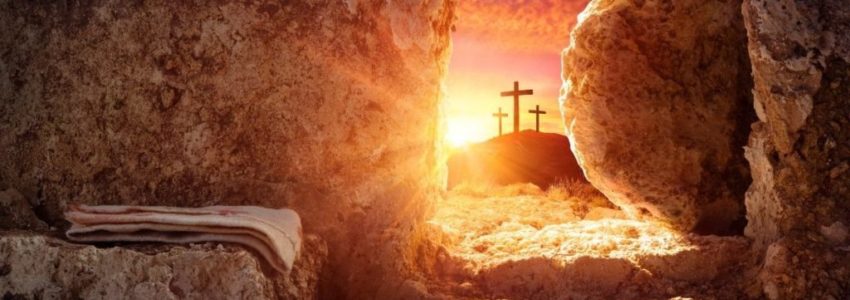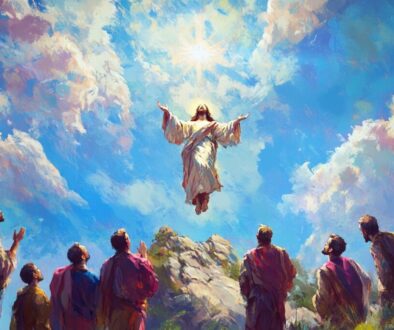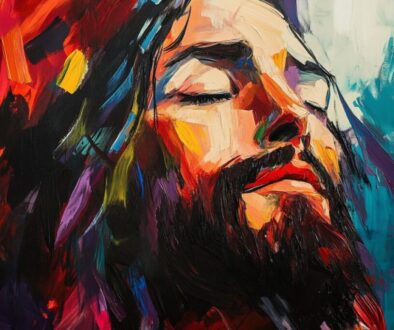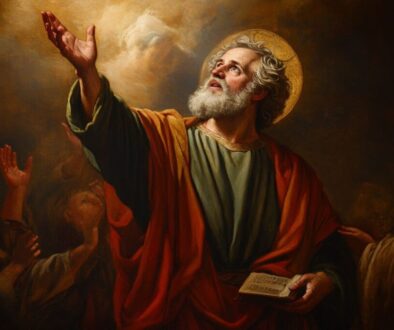Easter 2022 – Sermon by Father Levine

Fr. Joseph Levine; Holy Family Catholic Church, Burns, Oregon, and Missions; April 17, 2022
Jesus Christ has risen bodily from the dead and his Resurrection, in which we already share through faith and the hidden life of grace, is the promise for us of eternal life and the resurrection of the body.
It is easy to preach about the Cross because that is our present reality; it is hard to preach about the Resurrection because it is so far beyond our experience.
St. Augustine wrote: “The season before Easter signifies the troubles in which we live here and now, while the time after Easter … signifies the happiness that will be ours in the future. What we commemorate before Easter is what we experience in this life; what we celebrate after Easter points to something we do not yet possess. … such is the meaning of the ‘Alleluia’ that we sing.” (Discourse on Psalms, 148)
The liturgy, the Mass, communicates to us the reality of both the Cross and the Resurrection.
The liturgy contains always an element that is familiar and an element that is unfamiliar. Day after day, week after week, with all the variations of the liturgical season, the ritual of the Mass as prescribed by the Church, remains fundamentally unchanged. Day after day, week after week, year after year, we need to learn to enter more deeply into the reality, through the Cross into the Resurrection. Day after day, week after week, year after year, we need to learn to embrace the Cross anew and discover and learn anew to walk in the newness of life, the life of grace, the life of the Resurrection. In this life we must truly become ‘disciples of Jesus Christ’; disciples, that means ‘students’, ‘learners’.
When Jesus rose from the dead, he rose again in the same body that was crucified, but not to the same mortal life in which he walked upon the earth. This may be one reason why his disciples often had a hard time recognizing him after his resurrection. (cf. Lk 24:16; Jn 20:15)
For our own part, we might have the temptation to look upon the Risen Jesus and the resurrected life as a mere continuation of the life we are familiar with. We should rather pay close attention to Jesus’ words to St. Mary Magdalene, Do not hold on to me, for I have not yet ascended to my Father and your Father, to my God and your God. (Jn 20:17) And the words of St. Paul, From now on, we know no one according to the flesh, and even if we have known Christ according to the flesh, yet now we know him thus no longer; if then any be in Christ, he is a new creation, the old things have passed away, behold all things are made new. (2 Cor 5:16-17)
The resurrection is always new and unfamiliar, and yet at the same time it is present in our life and unrecognized, just as Jesus went unrecognized by his disciples. Let us consider something that is visibly shown to us through the liturgy of Holy Week and Easter.
First, the statues were veiled.
The veiled statues spoke to us of the veiled character of the dispensation of faith, this present time in which we walk by faith, not by sight. (2 Cor 5:7) So during this life, the mystery of God, the Most Holy Trinity, is veiled; the mystery of the Resurrection is veiled; the reality of the life of grace is veiled.
St. Paul writes: You have died and your life is hidden with Christ in God. (Col 3:3) There is the veil. We await in faith for the unveiling: When Christ who is our life appears, then you also will appear with him in glory.
Through the liturgy, in which we enter through the Cross into the Resurrection, there is always this interplay of veiling and unveiling, the hidden reality of faith and the present and real participation in that hidden reality.
Now, we celebrate Easter and sing ‘Alleluia’, professing our faith in the Resurrection of Jesus Christ and anticipating the final removal of the veils.
The statues have been unveiled. The Cross itself is unveiled: we already behold the resurrection in the Cross of Christ; we would not honor his Cross had he not risen from the dead. The statues and images of the saints have been unveiled: the saints are those who have been sanctified by Christ’s death and resurrection and who now behold with unveiled faces, the face of God.
In the Holy Eucharist, Christ’s Body and Blood are veiled by the appearances of bread and wine, but we would not celebrate the Holy Eucharist except in the faith of his resurrection and it is his living, glorified Body that we receive in holy communion. That the celebration of the Mass has continued for so many centuries is itself a sign of the reality of the Resurrection. When Christ comes the veil will be lifted and the sacrament will no longer be needed in the presence of the unveiled reality.
So also, the ongoing reality of the Church is a sign of the Resurrection because, despite so many self-inflicted wounds, Christ lives in the Church, sanctifying her members, giving them to share in his life.
We do not see in this life the reality of the resurrection, as did the Apostles, but we see and experience the effects of the Resurrection. They surround us in many ways, many ways in which human life has changed since the death and resurrection of Jesus Christ, many ways that we have come to take for granted and so no longer perceive their relation to the resurrection, just was we fail to perceive the dependence of the created world on God, the Creator. This veiled reality of the present life now waits with eager longing for the revelation of the sons of God. (Rm 8:19)
The empty tomb of Easter and the burial cloths of Jesus, which exist to this day, not only bear witness to the reality of the Resurrection of Jesus Christ, but they also show us a reality that is expectant and waiting for entrance into the final resurrection, a reality great beyond comparison.
What eye has not seen, nor ear heard, nor has it entered into the heart of man, what God has prepared for those who love him. (1 Cor 2:9)
Seek a Deeper Connection with God and Join Lay Cistercians of South Florida
Lay Cistercians of South Florida, is a community of lay people who seeks to have a deeper connection with God by living a life inspired by the monks and nuns through Lay Monasticism. Learn more about what is a Lay Cistercian on our website. Anyone who aspires to do the same as us, and is a confirmed Catholic is welcome to join us! We meet every second Saturday of the month at Emmanuel Catholic Church in Delray Beach, Florida.

This Content Has Been Reviewed For Accuracy
This content has undergone comprehensive fact-checking by our dedicated team of experts. Discover additional information about the rigorous editorial standards we adhere to on our website.



